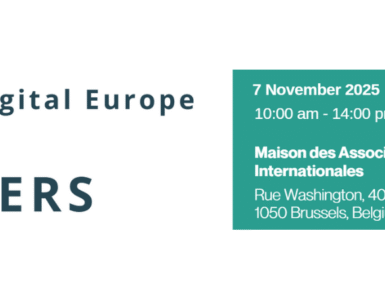by Skúli Bragi Geirdal, Media Commission, Iceland.
I present Iceland, the best country in the world… per capita.
The land of ice and fire. Glaciers and volcanoes. A land of immense natural beauty. Northern lights, geothermal areas, and hot springs. It sounds like a magical place on Earth with its fresh air, pure water, high quality of life, gender equality and both liberal and forward-thinking society. But not everything is perfect on this paradise island. In many ways it can be attributed to the fact that we are a small nation (population: 380.000). We have an incurable sense of inferiority and therefore we constantly compare ourselves to larger nations. Our dreams, expectations and hopes are therefore often unrealistic as we simply cannot handle them due to the small number of people living here. The state of media literacy in Iceland is a good example of this.
In the beginning of 2021, a new job position of a project manager at the Icelandic Media Commission was advertised. The job description was to develop and implement a new media and information literacy (MIL) policy for Iceland. The goal was to reach people of all ages with the aim of increasing their skills when using social media and search engines and promote critical thinking. This was a brand new position in a brand new department. A dream job for a media expert so I applied for the job, and within a few weeks I was hired. Just like that this “one man department” of media literacy in Iceland was established. Little did I know then about the scope of the task ahead.
Icelanders are survivors with a fighting mentality. Our ancestors were Vikings that survived epic sea voyages only so they could settle in the freezing polar climate on this island in the North Atlantic Ocean. They must have been running away from something bad you must think, and that might very well be true, but nonetheless their journey led them to this beautiful island. This driving force still lives in the population and when we encounter adversity we say “þetta reddast” (“it’ll work out in the end”) and usually we manage pretty well. The key factor is our willingness to cooperate and a high level of trust in the community on which we have based our democracy and welfare system.
I started full of confidence and energy, with big ideas and dreams for this job but quickly found out that the number of hours in the working day of a single person was not going to be nearly enough. I also realized through international cooperation that other countries had teams of people working on media literacy projects that I could only dream of, and built on years of experience. Iceland was in many ways years behind, with almost no research on the subject and the educational materials were scarce. The need to get started was therefore extremely urgent. So, like a true Icelander, I sought cooperation and started building a media literacy network in Iceland. Today it consists of over 30 companies, institutions, ministries and NGOs. So, in that sense I´m not alone anymore.
In order to reach the public, it was necessary to build trust towards the importance of media literacy for the public, to empower people as responsible participants of the digital world. In the beginning of 2021 media literacy was not a subject of public discussion in Iceland and few realised the meaning of the concept. Putting effort in research proved to be a key factor in turning that way of thinking around very quickly. The Icelandic Media Commission conducted four major studies in 2021 and 2022. They have since been the subject of well over 100 news and interviews on television, radio, and printed and online media. They were also presented in several reports and lectures. The Media Commission also conducted a stop, think, check campaign in the run-up to the 2021 parliamentary elections. All this has created a huge awareness in the society towards media and information literacy.
I am now close to having been in this job for two years. Last month we concluded the first media literacy week in Iceland. For less than 11.000 euros the MIL network was able to produce 6 educational videos together with teaching guides for teachers. These videos and teaching guides were made available free of charge to all schools in the country. One video was furthermore aired every day throughout the MIL week on the public service broadcaster. We also launched a new website with educational content and held a seminar about media literacy which was available both on site and via streaming. Today, media literacy is an established term in the public discussion. Now most people realize the importance of MIL. The next step forward will be to get more funding to be able to make more impact and provide more educational material for different age groups. Hopefully, by the end of this year the Icelandic Media Literacy department will have more than one employee. At least I can say with full confidence that we are doing the best we can based on manpower at the moment.

Author
Skúli Bragi Geirdal, Project Manager, Media Commission, Iceland












